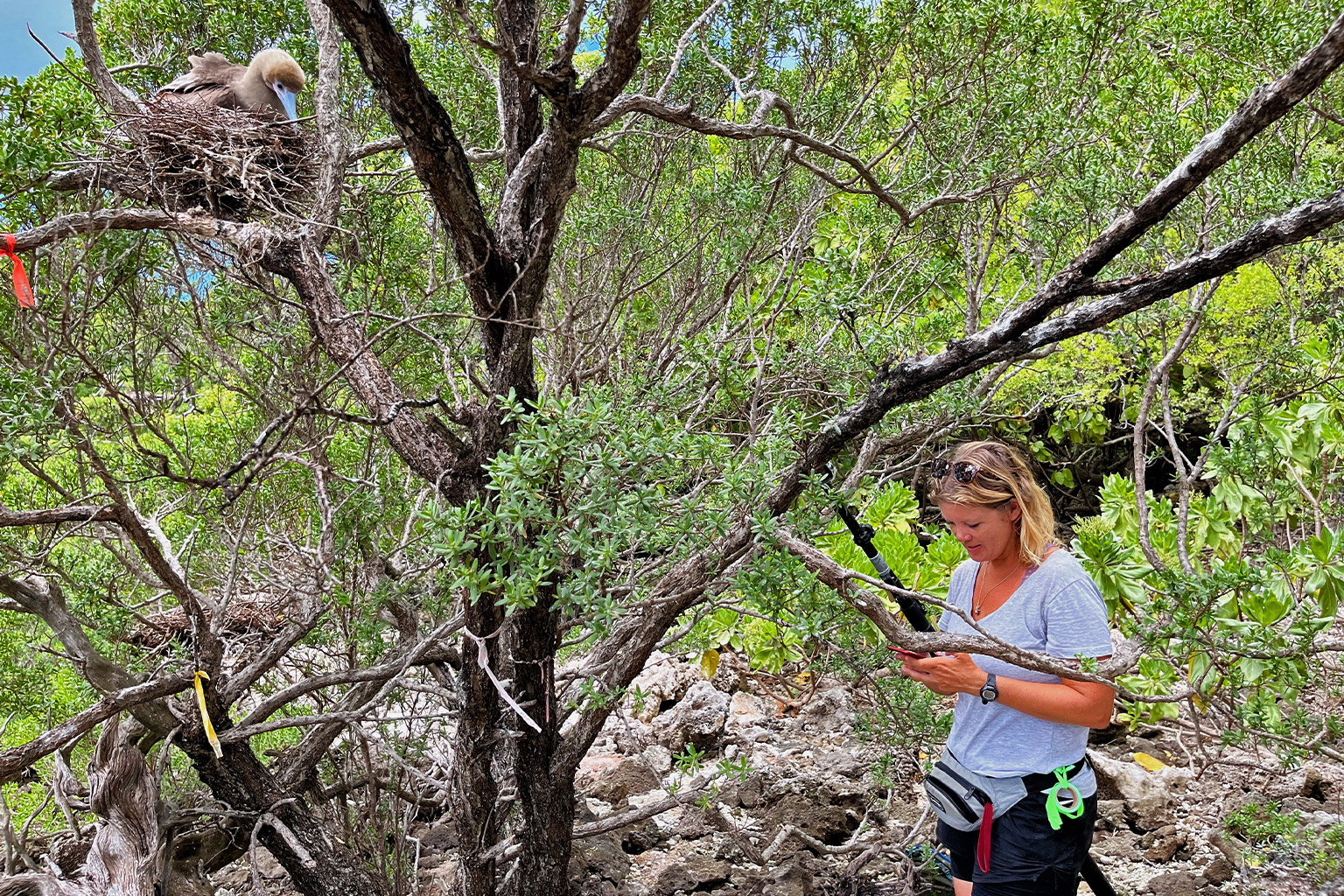
The black-and-white motion-triggered video looks like an outtake from a cheap horror movie: A handful of rats circle a smooth, platter-sized mound of sand. Suddenly a sea turtle hatchling appears, digging out of the nest. A rat grabs it by its head and quickly drags it off-camera. A second hatchling is snatched by another rat, flipped on its back and dragged off. The video ends.
But there’s more. In 2007 the first yellow crazy ants (Anoplolepis gracilipes) were identified on one of the same islands, or motus, of Tetiaroa Atoll in French Polynesia. There are some 200 species of ants in Polynesia, all nonnative, but the yellow crazies are the worst. “They spray formic acid that can blind or else deform the wings and legs of seabirds,” says Jayna DeVore, one of the scientists working out of the Tetiaroa Society’s eco-station on the main resort island of Onetahi. “I’ve seen chicks dancing in their nests to get the ants off them.”
DeVore extends a collapsible pole with a GoPro camera atop it to peek into a nest high up a mikimiki tree (Coprosma linariifolia). She’s looking to see if there’s a chick in it. The red-footed booby (Sula sula) parent flaps its wings and pokes at the camera with its long blue beak. Dozens more boobies and frigatebirds (genus Fregata) circle in the cerulean blue sky and occupy nearby trees and bushes in the seabird colony we’ve waded and hiked to on Hiraanae motu. Her seabird ecology study, along with those of other scientists researching the atoll’s plants, insects, lizards, crabs, coral and algae may be unique to the world.